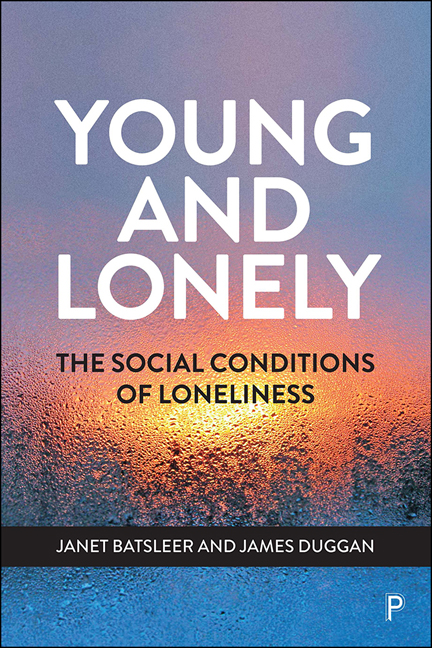Book contents
- Frontmatter
- Contents
- Notes on the Authors
- Acknowledgements
- Preface
- 1 Animate, Attune, Amplify
- 2 Finding Oneself a Loneliness Agenda
- 3 I’M New Here: Creating a New Research Project and A Young Person Led Research Agenda
- Part I The Social Conditions of Loneliness
- Part II The Experience of Loneliness
- Part III Building Friendship and Connection
- References
- Index
12 - Youth Work as Method
Published online by Cambridge University Press: 18 March 2021
- Frontmatter
- Contents
- Notes on the Authors
- Acknowledgements
- Preface
- 1 Animate, Attune, Amplify
- 2 Finding Oneself a Loneliness Agenda
- 3 I’M New Here: Creating a New Research Project and A Young Person Led Research Agenda
- Part I The Social Conditions of Loneliness
- Part II The Experience of Loneliness
- Part III Building Friendship and Connection
- References
- Index
Summary
Community-based youth work was a critical starting point for the whole co-research project and in this chapter we present in more depth the nature of the research partnership with key research partners and the ways this informed the whole research collaboration.
Youth work as engagement
The most important partner in this research was 42nd Street, a project that describes itself as supporting young people aged 11–25 years with their emotional well-being and mental health. They describe their offer thus:
We offer a range of individual therapeutic support and encourage and support young people to have a voice, and access opportunities to learn, develop new skills, be creative, have fun and demonstrate to themselves and others that they are able to recover, manage their mental health and wellbeing and achieve their full potential. (42nd Street, 2020)
In this self-description it is still possible to hear the resonance with the experience of the detached youth workers whose work in Manchester City Centre led to the formation of 42nd Street 40 years ago. There is a strong person-centred and relational approach to practice in the organisation, and the roots of the project in youth work are still evident in the range of groups and activities that run alongside individual therapeutic counselling and other one-to-one support sessions. There is also an emphasis on young people's voices and claims to rights shaping current and future projects. This work is carried out in a context where enjoyment and enthusiasm are constantly present. Doing things together and having fun is recognised as an important foundation from which to develop groups in which young people can offer mutual support, build up trust and a sense of safety in order to take risks for change, and have access to real opportunities for personal development.
The 18-month-long Loneliness Connects Us project was offered as one of 42nd Street's groups, and was staffed by a youth worker, Kurtis Angel. Angel was himself a young person within the terms we had set for the project (aged between 15 and 25) and had previously taken part in earlier 42nd Street research projects concerned with young black men's experience of mental health.
- Type
- Chapter
- Information
- Young and LonelyThe Social Conditions of Loneliness, pp. 131 - 146Publisher: Bristol University PressPrint publication year: 2020

